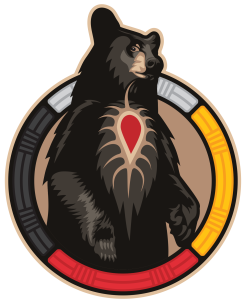
In Connection 3, you will learn about the concept of Two-Eyed Seeing and how it can be applied to deepening your relationships and learning from two different perspectives.
Two-Eyed Seeing
In the following video (ACHH, 2018), Elder Albert Marshall explains Two-Eyed Seeing [3:06] in the context of health care for Indigenous peoples. Health care professionals and researchers explain that knowledge from the Western lens is data-driven while knowledge from the Indigenous lens is based in spirituality and belief. Two-Eyed Seeing honours both and the process of co-creation using both eyes together addresses the whole person.
Video Transcript: Two-Eyed Seeing Approach [Doc]![]()
Key Messages from the Video
- The western lens is data-driven while the Indigenous lens brings the heart, soul, spirituality, and beliefs (ACHH, 2018).
- Two-Eyed Seeing combines both approaches in a wholistic way (ACHH, 2018) and is about the whole person.
- Co-Learning from two lenses can create transformative change for the future (ACHH, 2018).
- For the non-Indigenous person, “it would be helpful to be able to put on another lens … and to train yourself … to weave back and forth between two ways of knowing” (ACHH, 2018, 2:40).
Video Transcript: Two Eyed Seeing [Doc]![]()
Checkpoint 8: Recalling Two-Eyed Seeing
Drag & Drop each word or image into the correct circle to best reflect what you learned about Two-Eyed Seeing.
Bridging the gap Between Traditional and Western Medicine
In the following video (Royal College of Physicians and Surgeons of Canada, 2015), [4:59] Dr. Karen Hill is acknowledged for her work in bridging the gaps in Indigenous health. Dr. Hill shares how she provides access to both Traditional Medicine and Western Medicine in her practice. She emphasizes that Indigenous languages and cultures are important to healing.
Video Transcript: Bridging the gap between traditional and western medicine [Doc]![]()
Key Messages from the Video
- Health care providers need to build relationships with community.
- Health care systems can include Indigenous traditional knowledge.
- Indigenous peoples do not need to hide their use of traditional medicine or their cultural beliefs about healing.
- Indigenous languages and cultures are important for healing.
- “It’s not just about treating what is wrong, it’s about supporting what is good and what is healthy” (Royal College of Physicians and Surgeons of Canada, 2015, 2:57).
Checkpoint 9: Questionnaire
Consider what you have learned in Connections 2 and 3, then complete the Reflection Questionnaire.
Connection 3 Summary
In Connection 3, we learned:
- Two-Eyed Seeing is a term coined by Elder, Albert Marshall. It reflects co-learning from Indigenous and Western perspectives to improve health care.
- The Western perspective is data-driven while the Indigenous perspective brings belief, spirituality, and heart.
- Addressing the gaps in health can be accomplished by co-creating a more wholistic health care system by honouring the needs, cultures, and languages of Indigenous peoples.

To move on to Connection 4, click on the “Next: Connection 4: Reflecting on Privilege in Relationships →” button at the bottom right hand corner of this page.
References
ACHH. (2018, April 20). Two-Eyed Seeing approach. [Video]. YouTube. https://www.youtube.com/watch?v=F-Duzbupcfs![]()
Royal College of Physicians and Surgeons of Canada. (2015, March 25). Bridging the gap between traditional and western medicine: The remarkable work of Dr. Karen Hill. [YouTube]. https://www.youtube.com/watch?v=nVQU1EmoWoU&t=4s![]()

